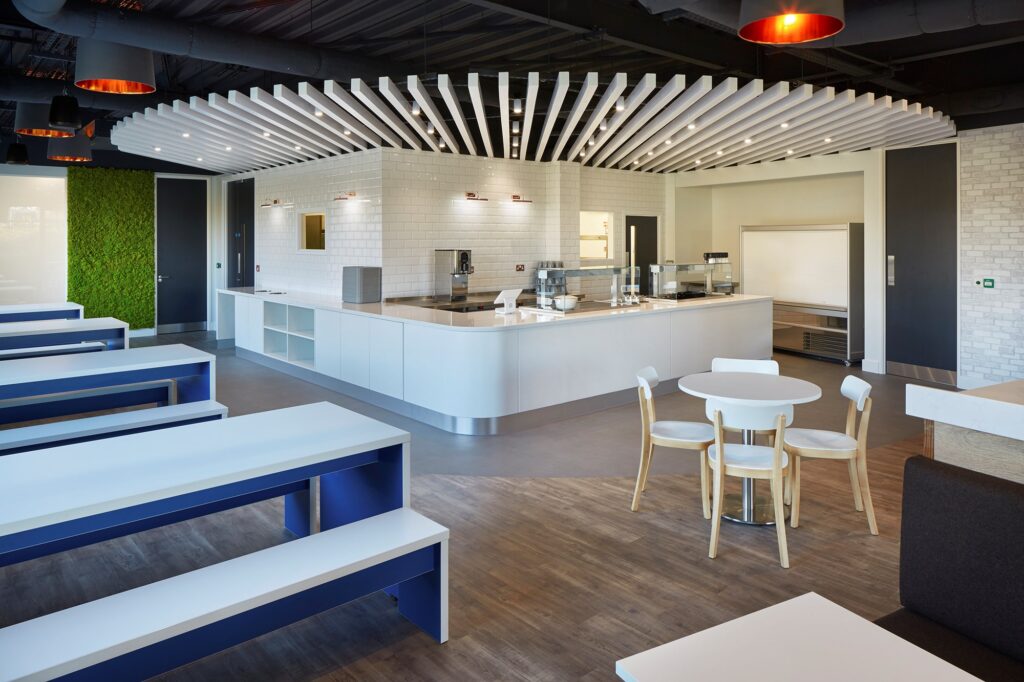Workplace culture is impacted by a plethora of small things.
Sure, free pizza on a Friday can contribute to your culture, but it’s not going to fix a culture that is ailing.
Culture is purposeful; it needs to be created and nurtured over time. There is no ‘one-size-fits-all’ cure to poor culture, but there are some key considerations that people-centric leaders are taking into account, starting with the psychology behind workplace culture.
Humans are social creatures
“Humans are inherently social” writes Dr Simon N. Young, with Nick Morgan adding that “we share mirror neurons that allow us to match each other’s emotions unconsciously and immediately. We leak emotions to each other. We anticipate and mirror each other’s movements when we’re in sympathy or agreement with one another”.
Fundamentally, the office is a lens on human behaviour; a group of people making things work and working together towards a common goal.
Consider your workplace as a tribe. Every person is involved in the tribe, contributes to the tribe’s ongoing success and wants to be involved in (and accepted by) the tribe.
In order for a tribe to thrive, it needs every individual performing at their best.
Now relate that back to the workplace. You need your people to perform at their best, but if our social needs are not met while at work, we become disinterested. People need to have their opinions heard, they need to be involved and they need to be appreciated.
This is why free pizza alone won’t fix your company culture. Instead, you need to consider the many contributing factors to your ongoing culture, which can be boiled down to the following:
- Internal culture – How your people interact with and support one another. The shared values, beliefs, attitudes and behaviours that characterise your organisation.
- Environment – The environment your people work in has a tremendous impact on the culture that forms. Ill-optimised environments often form exclusionary cliques, or don’t allow for natural relationship building between teams.
- Leadership – Your leadership is what ties everything together. Culture change usually comes from the top down. Leaders establish a workplace culture through communication, employee treatment, benefits and more. This then filters down – positively or negatively.
How the workplace impacts company culture
With the above in mind, let’s delve into how the workplace impacts overall company culture.
Now, it’s worth mentioning that the development of culture varies substantially depending on a business’ size, scale and industry.
An SME with 10-15 employees can have its culture impacted substantially by a single person leaving or joining. An international enterprise will not.
As a result, getting company culture right requires careful consideration by business leaders. Here’s an example of a business that brought together their people and place to create a single unified culture:
Jerroms’ workplace culture journey
Jerroms are a professional and ambitious financial services company based in Solihull.
Their current workplace was spread over three floors, creating a physical divide between teams.
As a result of our workplace consultancy, we rationalised their staff around one floor, whilst allowing for their projected five-year plan for growth in headcount.
We also put a strong emphasis on tailoring the design to support Jerroms’ long-term growth plans: to attract a new range of clients, as well as helping to attract and retain the best talent in the region.
The outcome is a great space which attracts great talent as a result of a strong culture and fantastic working environment.
“We chose Rhino as they are a long-trusted partner – we had worked with them on a previous office fit-out and they share our same ethos and professionalism.
Throughout the consultancy process, Rhino worked with the directors to thoroughly understand what their objectives were and how they want to maximise and best use the space. They then created the entire office layout around the directors’ objectives, providing impressive visuals and VR to enhance the proposed design.”
- Kathryn Jerrom, Jerroms
By bringing Jerroms’ people together in a beautifully fitted building with fabulous on-site facilities, we helped the team create a neutral environment where staff can organically meet together and gel with new colleagues.
It was then down to leadership to tie the culture together, which they successfully did in the following months. Culture, environment and leadership – all equally as important.

People-centric leaders understand the importance of culture
In almost every instance, staff have a very good understanding of what they want and need. It’s up to people-centric leaders to take note of what their people are saying.
It’s almost impossible for upper management to make the right decisions on culture without consulting with their people. After all, our people make up our tribe, and we should always make it our goal to do what’s right by our tribe.
So, it stands to reason that, if you’re looking to bolster your workplace culture, don’t expect Free Pizza Fridays to carry you through. Instead, become a people-centric leader: listen to what your employees are saying about their environmental needs and take proactive action to ensure that desired change actually happens.
People-centric leaders understand the importance of culture as an organisational growth facilitator. Better culture = better individual performance. Better individual performance = better organisational performance.
With culture being such a key part of your organisation’s success, why don’t you speak to our workplace consultants when it’s time for you to make a growth decision?
Looking for more examples of how environment impacts culture?
Click here to learn about how we brought OBEX’s vision to life.
Click here to see how brand and culture closely align at Domino’s.
It All Starts With a Conversation
If you have a question, if you are looking for some bespoke advice, get in touch with our experts today, we’d love to hear about your project.
For a no-obligation chat about your office needs, complete the form below and one of our specialists will be in touch.
 Office
Office